The Roman Forum and Palatine Hill are two of Rome’s most significant historical sites and travel destinations, offering visitors a chance to explore the ancient heart of the city. Located in close proximity to each other, these sites provide a glimpse into Rome’s rich past and its transformation over the centuries.
- The Roman Forum was once the epicenter of Roman public life.
- The Palatine Hills was the birthplace of Rome according to legend.
- The Roman Forum is a public building complex, while the Palatine Hill is a palace-type building complex.
Table of Contents
Ticket
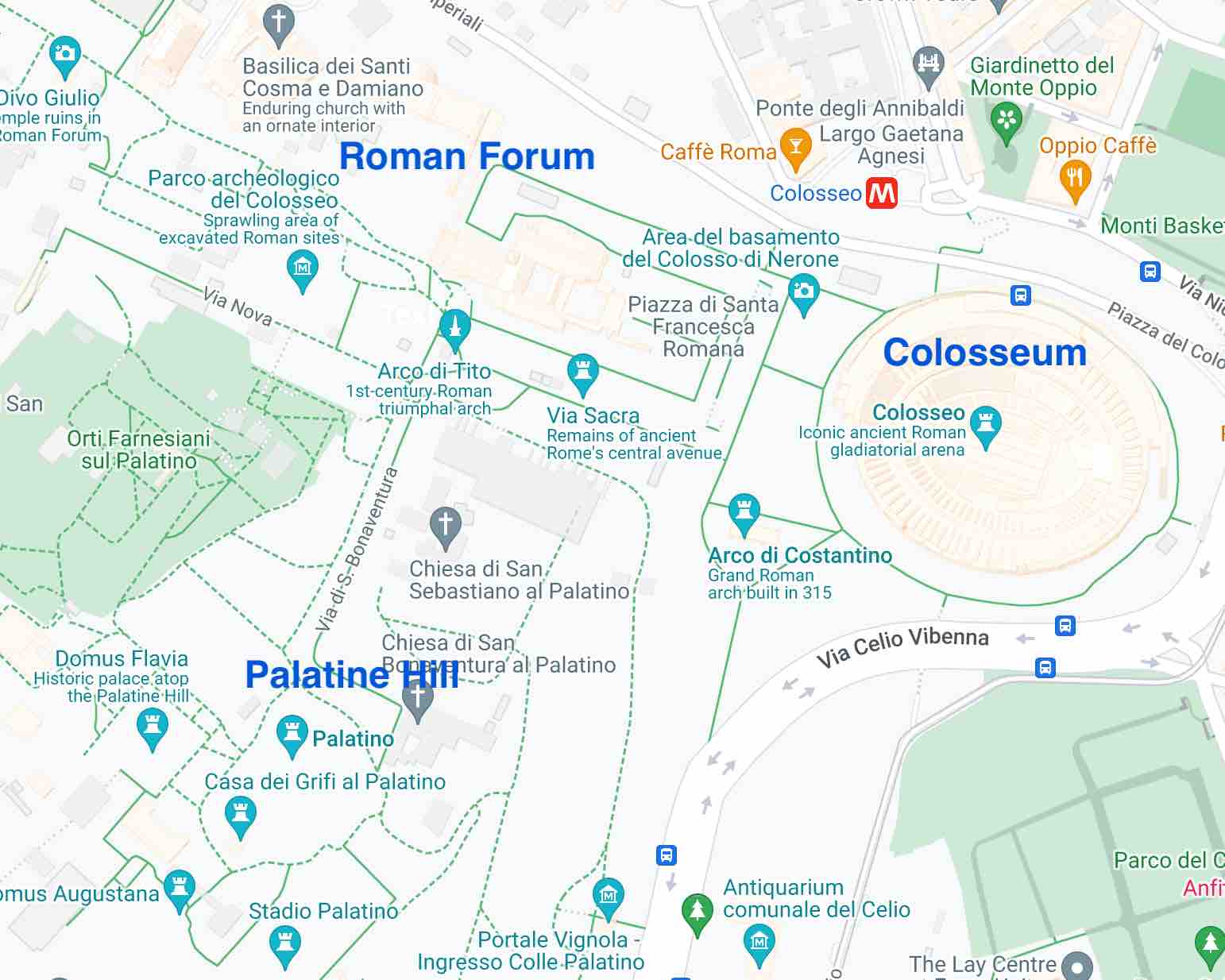
Standard Ticket Official Tickets: Colosseum + Roman Forum + Palatine Hill
Standard Ticket Price:
Standard/Reduced ticket €16.00 / €2.00, Under 18-year-old Free.
Online Reservation fee €2.00, pre-booking ticket is comp
(Recommended) Full Experience Ticket: Official Full Experience Ticket €24.00 includes additional exploring the underground of Colosseum and the Arena and S.U.P.E.R. sites.
Check details in Rome Colosseum Guide.
The Forum Super Ticket: official ticket € 18.00
- 1 open entrance to the Roman Forum, Palatine with Imperial Forum
- Access to the S.U.P.E.R. sites that can be visited
- Ticket is valid for 30 days from the booking day;
- NOT INCLUDE entrance to Colosseum
- NOT INCLUDE the Underground and the Arena of the Colosseum
- NOT INCLUDE educational tour
Ticket name can be changed once.
Roma Pass
Roma Pass can choose Colosseum + Roman Forum + Palatine Hill as one attraction. For Roma Pass holders, the reservation for entry is mandatory. Reservation fee € 2.00.
Visiting
Entry
After entering Colosseum, visitors have 24 hours to enter the Palatine Hills and Roman Forum. After exiting Colosseum, following the signs and walking 5 mintues, you should arrive the entrance of the Roman Forum and Palatine Hills.
If visitors visit Roman Forum and Palatine Hills first, they should arrive at the park 15 minutes prior to their booked access time with the admission ticket.
All visitors and their belongings must undergo security screening for safety purposes.
Tips
Visting in the Roman Forum and Palatine Hill can take anywhere from 2-4 hours, depending on your level of interest and pace.
As these sites are outdoors, it is best to wear comfortable shoes, bring sun protection, and carry water, especially during the warmer months.
To visit the internal sites of the Palatine Hill and Roman Forum, you’ll need a S.U.P.E.R. ticket and a well-planned itinerary. The ticket is valid for two consecutive days and covers the Colosseum, Roman Forum, and Palatine Hill.
Roman Forum
The Roman Forum, once the epicenter of Roman public life, is a sprawling complex of temples, basilicas, and arches. As you wander through its ruins, you can imagine the hustle and bustle of daily life, with politicians giving speeches, merchants selling their wares, and citizens discussing current events.
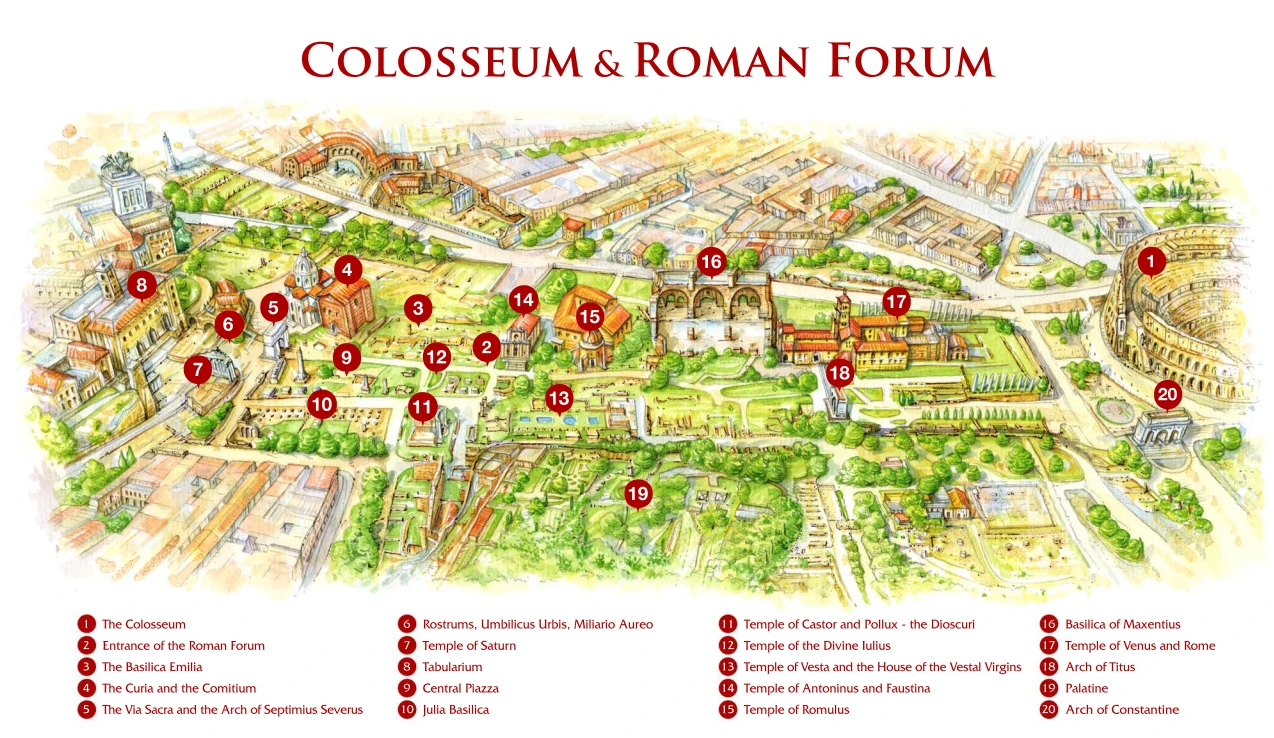
Don’t miss the views over the Roman Forum from the Tabularium (#8), which is a tunnel links Palazzo dei Conservatori to Palazzo Nuovo.
Arch of Titus
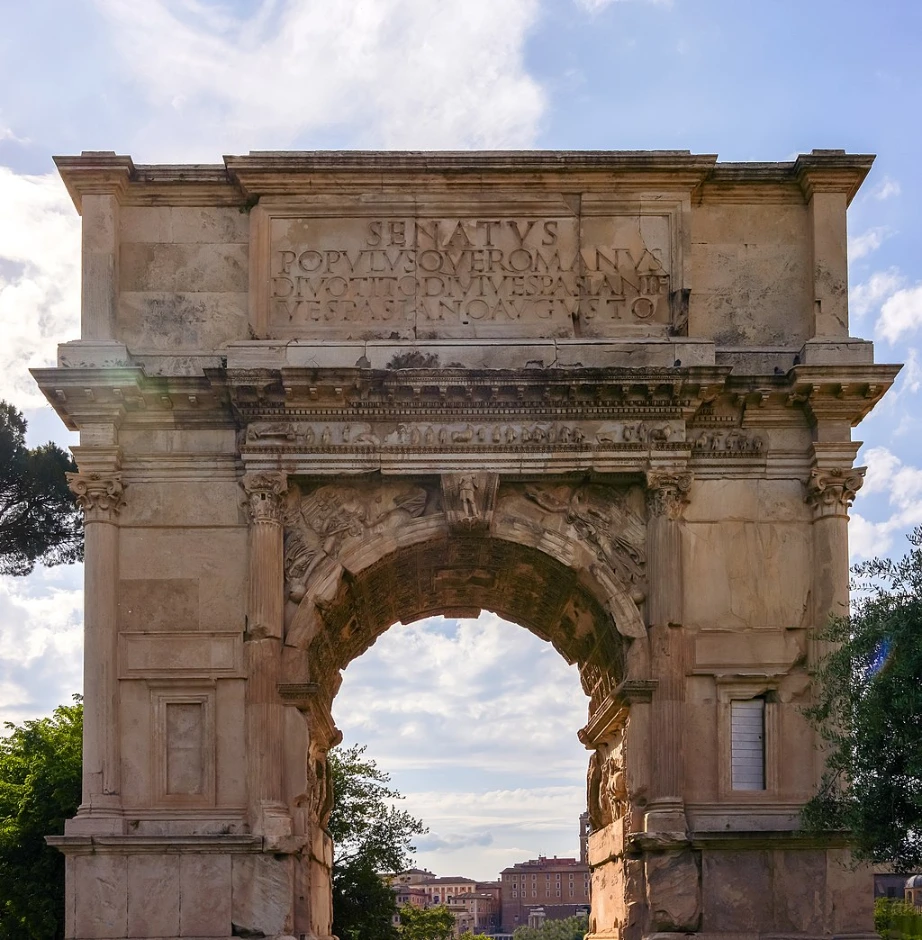
The Arch of Titus is a triumphal arch built in 81 AD to commemorate the military victories of Emperor Titus. This iconic structure celebrates the conquest of Jerusalem and the capture of the Jewish Temple treasures. The arch features detailed reliefs depicting scenes from the triumphal procession, showcasing the spoils of war, including the menorah. It stands as a remarkable example of Roman triumphal architecture, symbolizing the military achievements and power of the Roman Empire during the Flavian dynasty. To this day, many Jewish people still refuse to pass beneath the Arch of Titus. It was one of the first buildings sustaining a modern restoration, starting with Raffaele Stern in 1817.
Arch of Septimius Severus

The Arch of Septimius Severus, a triumphal arch located in the Roman Forum, is a remarkable testament to Roman imperial glory. Commissioned by Emperor Septimius Severus in 203 CE, the arch commemorates his military victories over the Parthians. The structure, adorned with intricate reliefs depicting scenes of battle and the emperor’s triumphal procession, stands as a symbol of power and triumph. With its grandeur and historical significance, the Arch of Septimius Severus serves as a captivating link between the past and the present, offering modern visitors a glimpse into the martial achievements and architectural prowess of ancient Rome.
Basilica of Maxentius
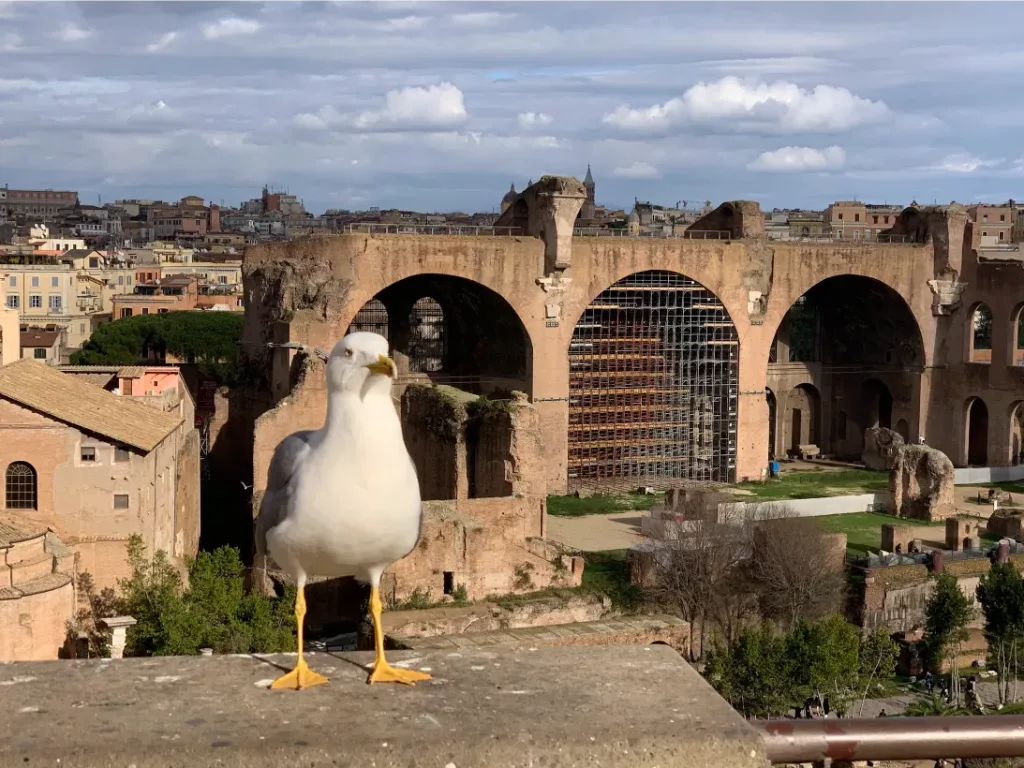
The Basilica of Maxentius, also known as the Basilica Nova, was built by Emperor Maxentius in the early 4th century AD, it is renowned for its massive architectural scale. The basilica features a central nave flanked by aisles and towering vaults, showcasing impressive engineering. Despite being unfinished due to political changes, the Basilica of Maxentius stands as a significant monument, representing the grandeur of Roman imperial architecture during the early Christian era.
The House of the Vestals

The House of the Vestals, situated on the Roman Forum’s eastern side, was the residence for the Vestal Virgins, priestesses dedicated to the goddess Vesta. This ancient Roman complex consisted of a series of rooms and courtyards, with the Atrium Vestae at its center. The Vestals played a crucial role in maintaining the sacred fire of Vesta, symbolizing the eternal flame of Rome. The house, rich in archaeological significance, reflects the importance of the Vestals in Roman religious practices and their privileged status in society.
Temple of Saturn
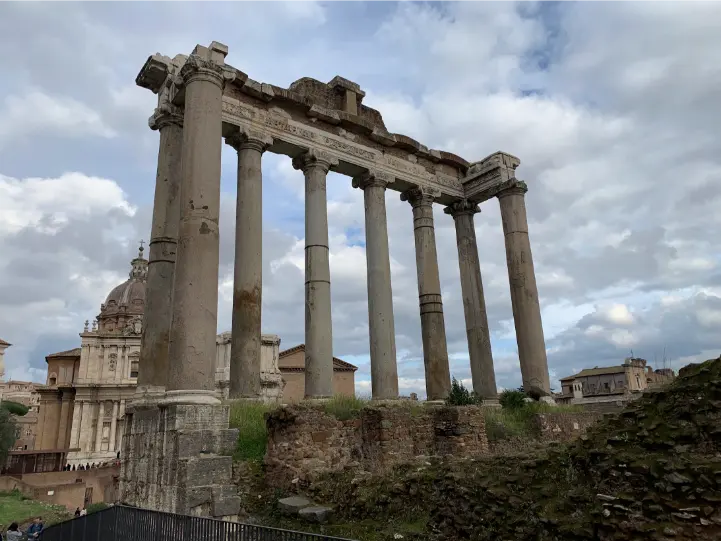
The Temple of Saturn was built in the 5th century BCE and later reconstructed, it was dedicated to Saturn, the god of agriculture and wealth. The temple’s iconic columns and pediment have left a lasting impression on the Forum’s landscape. During the Roman Republic, it housed the state treasury, and its completion marked the end of the Roman festival of Saturnalia, a period of revelry and gift-giving. The Temple of Saturn’s enduring presence and its role in Roman religious, political, and economic affairs make it a captivating testament to the city’s rich and diverse history, drawing visitors into the heart of ancient Rome.
Temple of Vesta
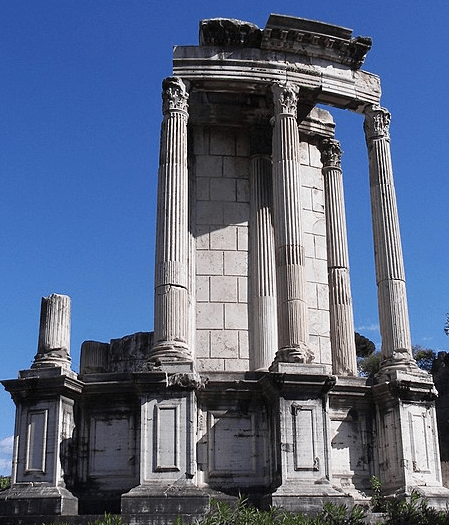
The Temple of Vesta, situated in the Roman Forum, is an ancient sanctuary dedicated to the goddess Vesta, the guardian of the hearth and home. This circular temple, characterized by its distinctive architectural form, housed the sacred fire tended by the Vestal Virgins, priestesses devoted to Vesta. The eternal flame symbolized the continuity and well-being of Rome. The Temple of Vesta, with its prominent location and religious significance, reflects the importance of domestic and civic rituals in ancient Roman culture, making it a key archaeological and cultural site in the heart of the city. The circular design of the Temple of Vesta, exemplifying classical Roman architecture, featured a conical roof supported by columns. Despite the temple’s modest size, its spiritual importance and role in Roman religious practices have left a lasting legacy in the historical landscape of the Roman Forum.
Temple of Castor and Pollux

The Temple of Castor and Pollux is an ancient structure dedicated to the mythical twin brothers Castor and Pollux, known as the Dioscuri. Initially constructed in the 5th century BCE and later rebuilt, the temple stands as a symbol of divine intervention in Rome’s history. According to legend, the appearance of the Dioscuri on this spot during a critical battle influenced the Romans’ victory. The temple’s iconic design features three Corinthian columns that have been partially restored, providing a glimpse into the architectural splendor of ancient Rome and the enduring mythological connections embedded in its structures.
Temple of Caesar

The Temple of Caesar, or the Temple of Divus Julius, was built to honor Julius Caesar after his assassination in 44 BCE. The temple is situated at the site of Caesar’s cremation and is known for its historical significance. The structure was adorned with a statue of Caesar and served as a place for public veneration. Over time, the temple underwent modifications, and its ruins provide a glimpse into the reverence bestowed upon Julius Caesar in the wake of his death, marking a pivotal moment in Roman history and politics.
Temple of Antoninus and Faustina
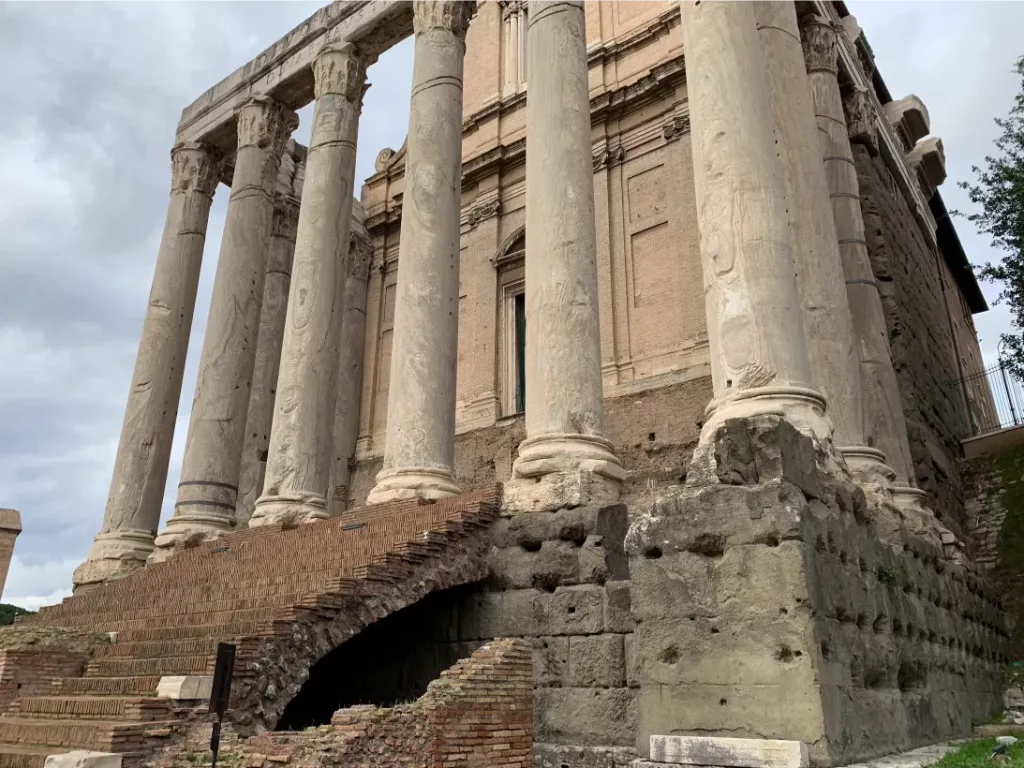
The Temple of Antoninus and Faustina, located in the Roman Forum, is an ancient Roman temple built by the Emperor Antoninus Pius in 141 AD to honor his deceased wife, Faustina the Elder. When Antoninus Pius was deified after his death in 161 AD, the temple was re-dedicated to both Antoninus and Faustina by his successor, Marcus Aurelius.The well-preserved Corinthian columns and the temple’s conversion into the church of San Lorenzo in Miranda highlight its enduring architectural significance and adaptation over the centuries, showcasing the intersection of pagan and Christian history in Rome.
Basilica Aemilia

Basilica refers to a large rectangular building in ancient Rome. The Basilica Aemilia, once an imposing structure in the Roman Forum, was a civic building built by the Roman censors Marcus Aemilius Lepidus and Marcus Fulvius Nobilior in 179 BCE. With its grand colonnaded facade and multiple aisles, the basilica served as a public space for legal, commercial, and political activities. Although only fragments of its original structure remain, the Basilica Aemilia stands as a testament to Roman architectural prowess and the vital role basilicas played in the civic life of ancient Rome.
Basilica Julia

The Basilica Julia, located in the Roman Forum, was a grand civic building commissioned by Julius Caesar in 54 BCE. Designed to house law courts and other official proceedings, the basilica featured a spacious interior with a central nave and aisles, adorned with columns and statues. Despite undergoing several renovations and restorations, the Basilica Julia stands as a testament to Roman architectural innovation and the importance of civic spaces in the heart of the ancient city.
Roman Senate (Curia Julia)

The Senate House, also known as the Curia Julia, was initially built by Julius Caesar but completed by Augustus in 29 BCE. This stately building served as the venue for political debates, discussions, and decision-making, playing a central role in the political life of the Roman Republic and Empire. Though the original structure underwent modifications over time, the Curia Julia remains a significant archaeological site, offering insights into the political history of Rome. The current Senate was reconstructed in 1937 to resemble the appearance of the ancient Roman Senate.
The Rostra
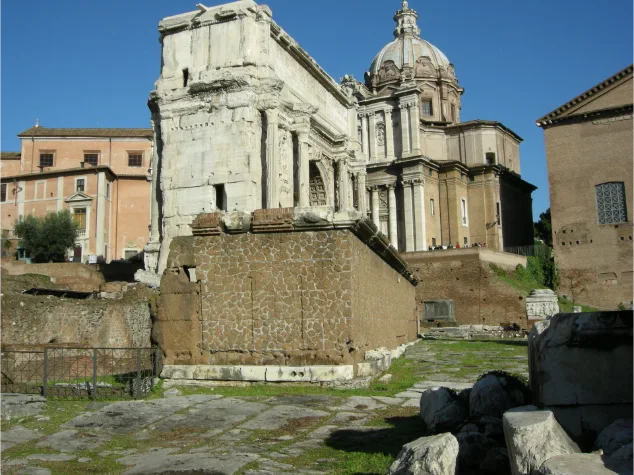
The Rostra was a raised platform adorned with the prows (rostra) of captured enemy ships. This iconic structure served as a speaker’s platform from which orators addressed the Roman citizens. It witnessed historic speeches, including those by figures like Cicero and Julius Caesar, making the Rostra a symbol of political discourse and public communication in ancient Rome.
Palatine Hills
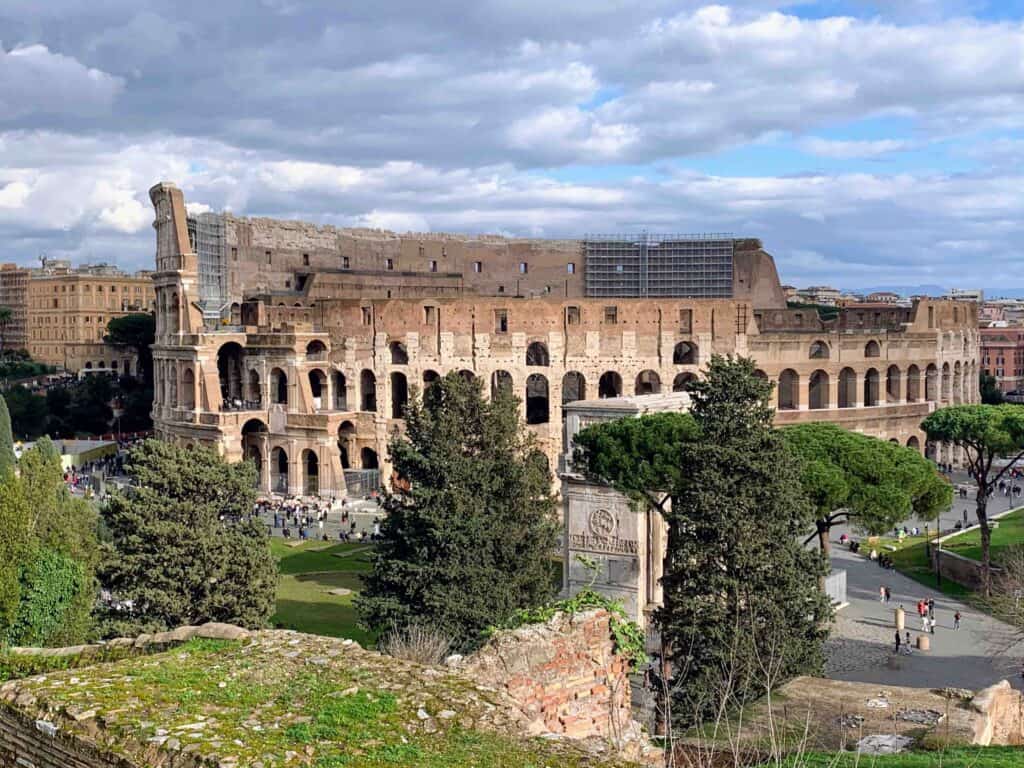
According to Roman mythology, Rome’s birthplace is associated with the Palatine Hill. Legend has it that the twin brothers Romulus and Remus, raised by a she-wolf, chose the Palatine Hill as the site for founding the city in 753 BCE. This mythological tale serves as the symbolic birthplace of Rome and has contributed to the cultural identity and historical significance of the Palatine Hill within the city’s narrative.
Perched on the Palatine Hill, you’ll find the remains of imperial palaces and luxurious residences. The views from the hilltop are breathtaking, offering a panoramic vista of the Roman Forum, Colosseum, and the city beyond. Discover the ruins of the Flavian Palace, Domus Augustana, and the Stadium of Domitian, and take a moment to appreciate the grandeur and opulence of Rome’s ancient elite.
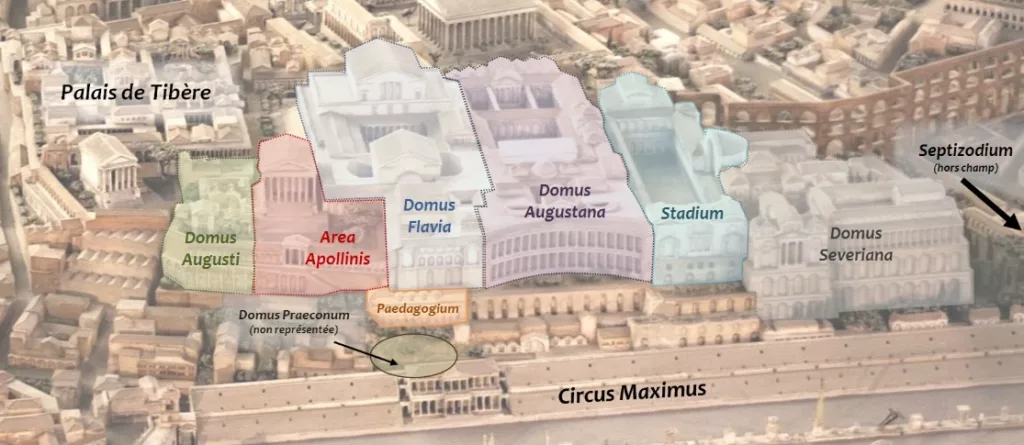
Flavian Palace
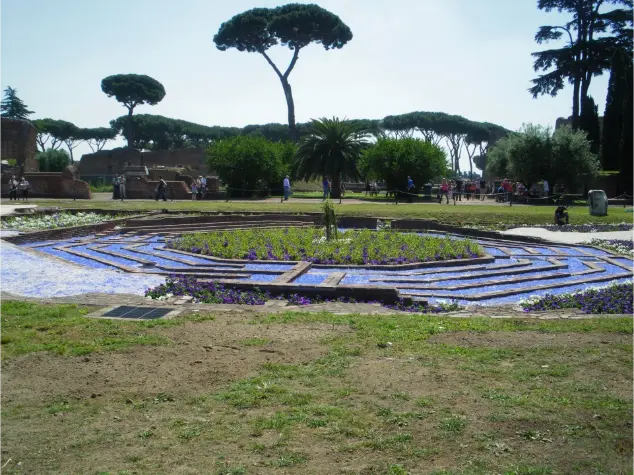
The Flavian Palace on the Palatine Hill, built in the late 1st century AD, served as the residence for emperors Vespasian, Titus, and Domitian. With opulent living quarters, courtyards, and exquisite frescoes, the palace exemplified the grandeur of Roman imperial architecture. Today’s visitors can explore its archaeological remains, gaining insights into the luxurious lifestyle of the emperors and the cultural legacy of the Flavian dynasty. There is an octagonal fountain in the central courtyard.
Domus Augustana

The Domus Augustana, part of the Flavian Palace complex on the Palatine Hill, was the private residence of Roman emperors during the Flavian dynasty. This luxurious palace, built in the late 1st century AD, featured opulent living quarters, beautifully adorned rooms, and expansive courtyards. With its exquisite architectural design and intricate decorations, the Domus Augustana exemplified the grandeur and sophistication of imperial Roman living. Visitors today can explore the archaeological remnants of this remarkable palace, gaining insights into the lifestyle and artistic tastes of emperors such as Vespasian, Titus, and Domitian, who once called the Domus Augustana their home.
Stadium of Domitian

The Stadium of Domitian, nestled within the Palatine Hill’s imperial complex, offers a glimpse into the private world of a Roman emperor. Built by Domitian (81-96 AD), this elongated, sunken garden bears the shape of a traditional Roman circus yet was too small for chariot races. Instead, it’s believed to have been a lavish, private space within his palace. Surrounded by porticoes and embellished with fountains and statuary, this ‘stadium’ likely served as the emperor’s place for leisurely strolls, exercise, and perhaps intimate performances. Its true purpose remains somewhat mysterious, adding to the allure of this unique structure.
Domus Severiana

The Domus Severiana stands as a testament to the late Roman Empire’s grandeur. This sprawling palace complex, commissioned by Emperor Septimius Severus around 200 AD, marked the final major expansion of the Palatine Hill’s imperial residences. While marble and precious decorations are long gone, the surviving brick substructures rise impressively along the hill’s southeastern edge. Built upon an artificial platform to extend the limited space on the Palatine, the Domus Severiana once included the Baths of Septimius Severus and overlooked the Circus Maximus below. Its most striking feature, the Septizodium, was a monumental fountain and facade meant to impress visitors arriving from the emperor’s African homeland.
Domus Augusti

The Domus Augusti, situated on the Palatine Hill in Rome, was the private residence of Emperor Augustus, the first Roman emperor. This imperial abode, constructed in the early 1st century BCE, reflects the architectural sophistication and opulence of the Augustan period. The Domus Augusti featured lavish living quarters, beautifully adorned courtyards, and intricate frescoes, offering a glimpse into the luxurious lifestyle of Augustus and his family. As a pivotal figure in Roman history, Augustus played a crucial role in shaping the city’s destiny, and the remnants of his residence provide valuable insights into the cultural and political milieu of ancient Rome. Today, visitors to the Palatine Hill can explore the archaeological remains of the Domus Augusti, experiencing firsthand the grandeur associated with the early days of the Roman Empire.
Palatine Museum (Museo Palatino)

The Museo Palatino, situated on the Palatine Hill in Rome, is a cultural treasure trove that enriches our understanding of ancient Roman life. Home to a diverse collection of artifacts, sculptures, and archaeological finds excavated from the Palatine Hill, this museum offers a captivating journey into the heart of Roman history. Visitors can explore the remnants of imperial palaces, exquisite frescoes, and everyday objects that once belonged to the ancient Romans. The Museo Palatino serves as a window into the opulence, artistry, and daily existence of the people who shaped the destiny of Rome. Through its curated displays, the museum brings to life the grandeur of the Flavian dynasty and the fascinating narratives embedded in the layers of this historic hill.
Maps
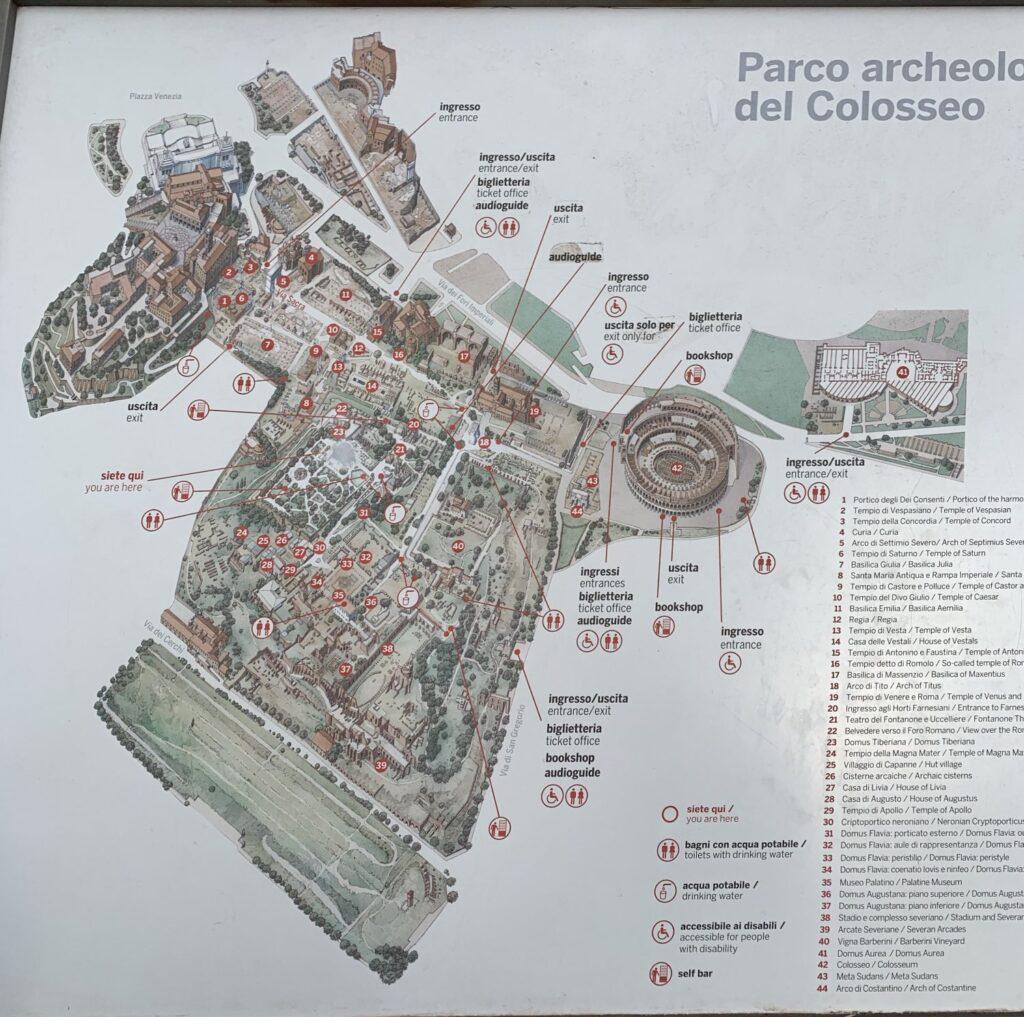
Opening Hours
The Roman forum/Palatine are open every day
- Forum and Palatine:
January 1 to February 29: 9:00 AM – 4:30 PM
March 1 to March 30: 9:00 AM – 5:30 PM
March 31 to September 30: 9:00 AM – 7:15 PM
October 1 to October 26: 9:00 AM – 6:30 PM
October 27 to December 31: 9:00 AM – 4:30 PM - Last admission one hour before closing.
S.U.P.E.R. sites currently open to visitors:
Palatine Museum
3 October – 29 February > 9.30am – 3.30pm (last entry 3pm), closed on free entry days
House of Augustus
3 October – 29 February > 9.30am – 3.30pm (last entry 3pm), closed on free entry days and on Mondays
Aula Isiaca/Loggia Mattei (closed Friday, Saturday and Sunday)
3 October – 29 February > 9.30am – 3.30pm (last entry 3pm), closed on free entry days
Santa Maria Antiqua – Domitian’s Ramp – Oratory of the Forty Martyrs
3 October – 29 February > 9.30am – 3.45pm (last entry 3.15pm), closed on free entry days
Curia Iulia
3 October – 29 February > 9.30am – 3.30pm (last entry 3pm), open Saturday, Sunday and Monday, closed on free entry days
Domus Tiberiana (exhibition rooms)
3 October – 29 February > 9.30am – 3.30pm (last entry 3pm), closed on free entry days
S.U.P.E.R. sites temporarily closed
Domus Transitoria
Livia’s house
Transportation
Metro: Line B, Colosseum stop
Bus: n. 75 – 81 – 673 – 175 – 204
Tram: n. 3
Check more information at Rome Colosseum Guide.
Seven Hills of Rome
The Seven Hills of Rome are a group of hills that played a significant role in the historical and cultural development of the city. These hills are Palatine, Aventine, Capitoline, Quirinal, Viminal, Esquiline, and Caelian. Each hill has its own unique history and importance in the ancient city.
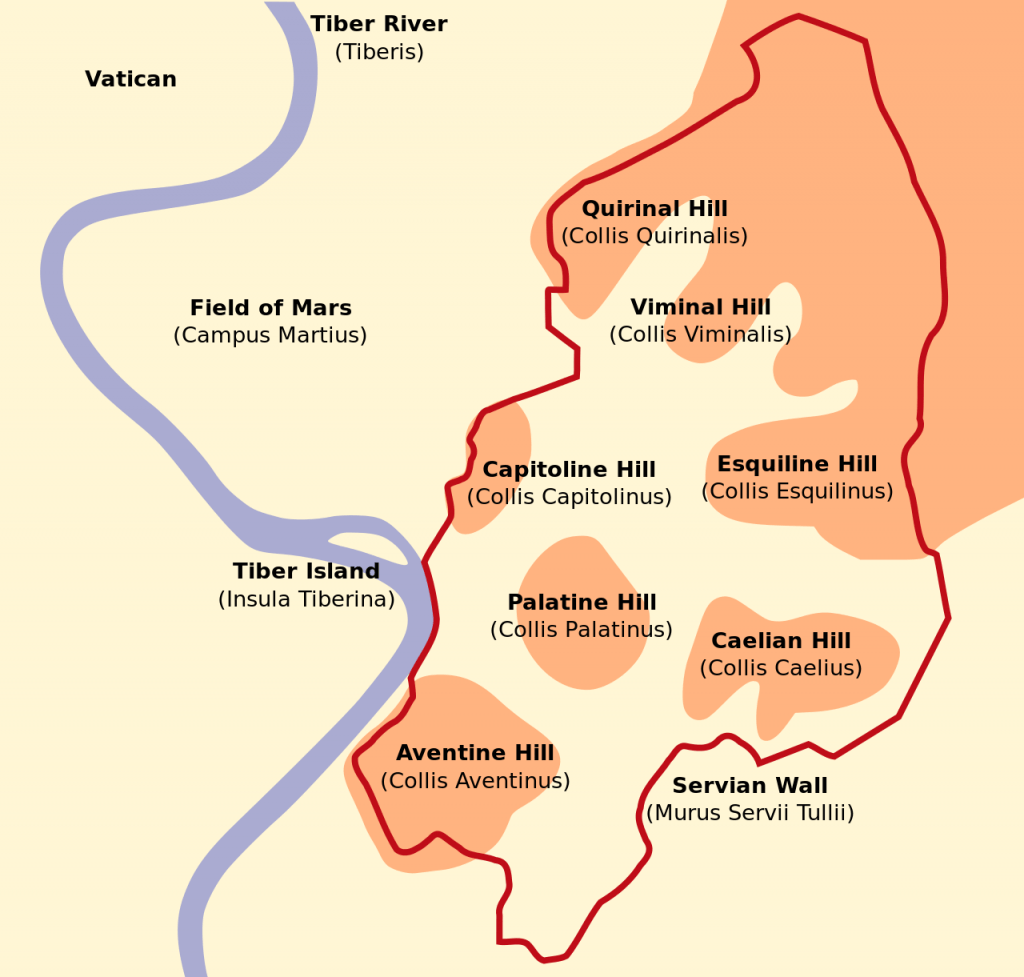
- Palatine Hill: Considered the center of ancient Rome, Palatine Hill is where the city was founded according to Roman mythology. The legend tells of Romulus and Remus, twin brothers raised by a she-wolf, who chose this hill as the site for the foundation of Rome in 753 BCE.
- Aventine Hill: This hill was traditionally associated with the common people and plebeians. It is known for its peaceful and green surroundings, featuring places like the Garden of Oranges (Giardino degli Aranci) and the keyhole view of St. Peter’s Basilica.
- Capitoline Hill: One of the most important hills, Capitoline Hill is home to the Capitoline Museums and Piazza del Campidoglio, a stunning square designed by Michelangelo. It has been a religious and political center throughout Roman history.
- Quirinal Hill: Today, the Quirinal Palace, the official residence of the President of the Italian Republic, is located on this hill. It has a long history of association with power and authority.
- Viminal Hill: Viminal Hill is the smallest of the Seven Hills and is often associated with residential and commercial activities in ancient times.
- Esquiline Hill: The largest of the Seven Hills, Esquiline Hill was a diverse and densely populated area in ancient Rome. It features landmarks such as the Baths of Diocletian.
- Caelian Hill: Known for its wealthy residences in ancient times, Caelian Hill is characterized by its picturesque streets and the Basilica of St. John Lateran, the oldest and highest-ranking of the four major basilicas in Rome.

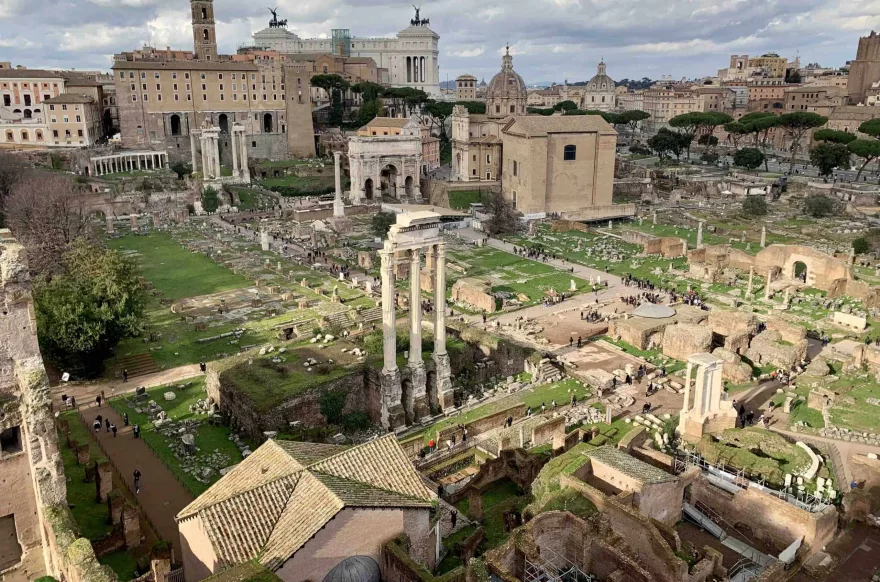
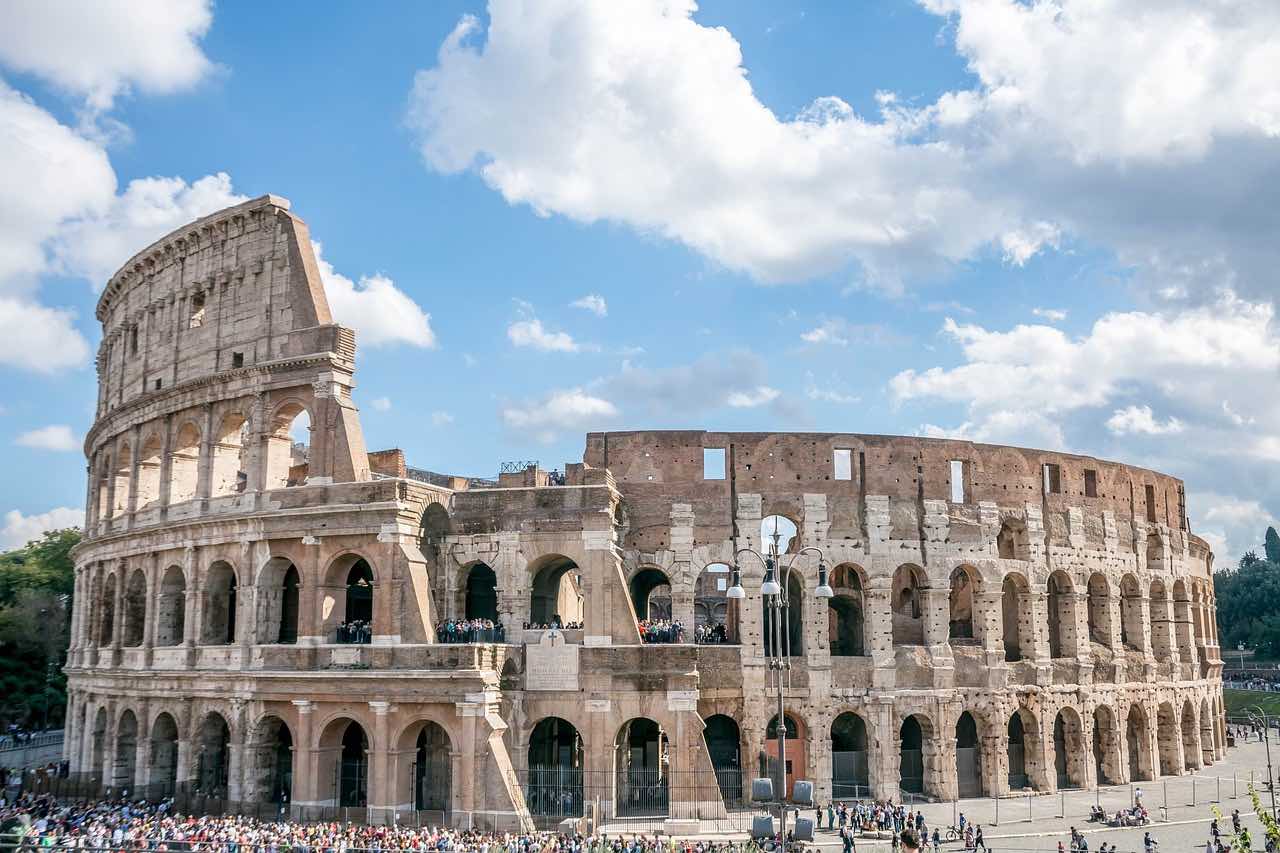

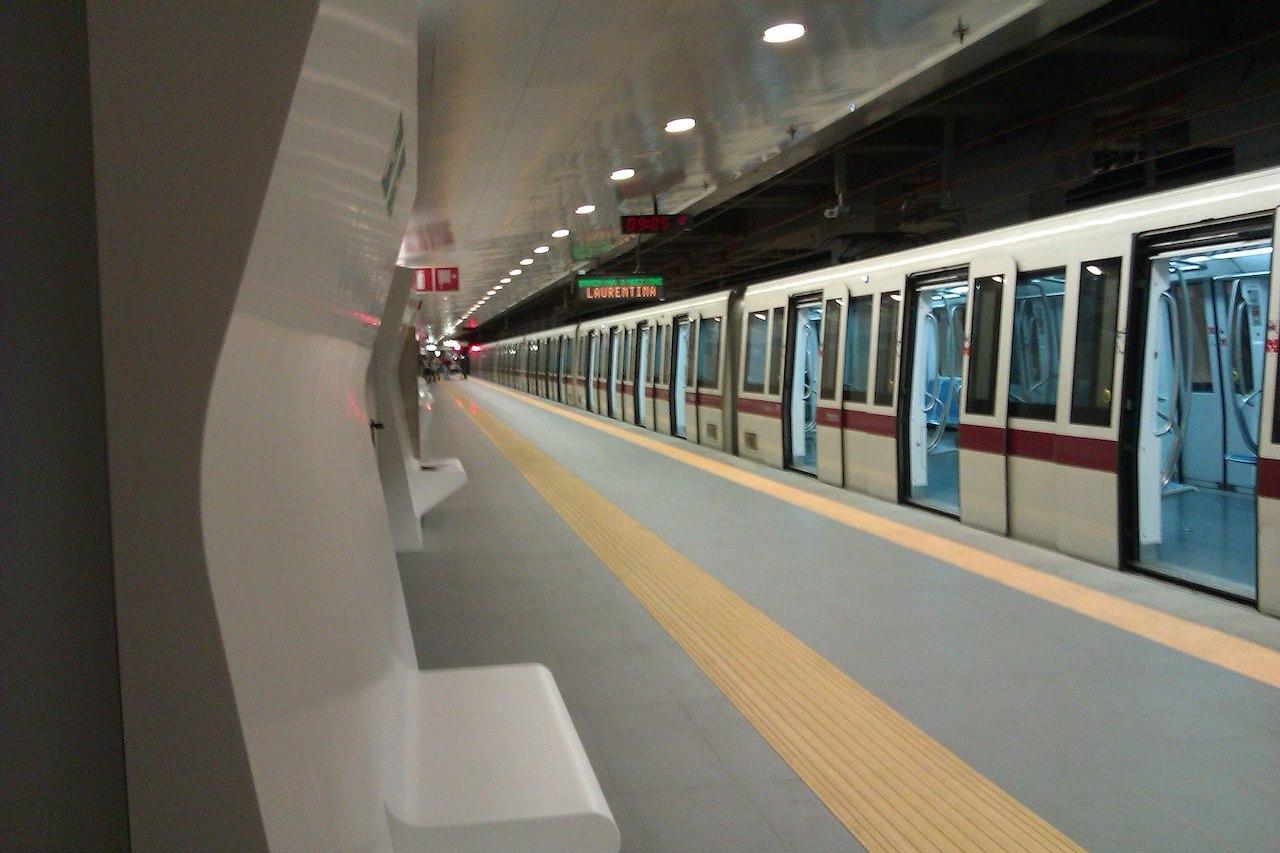
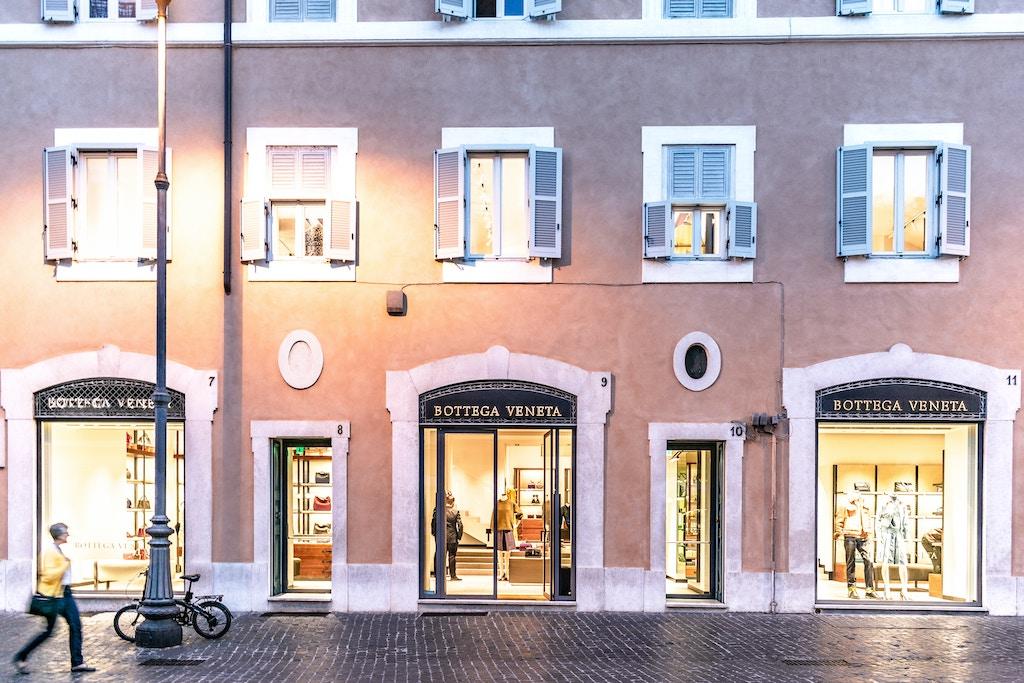

1 thought on “Roman Forum and Palatine Hill Guide”